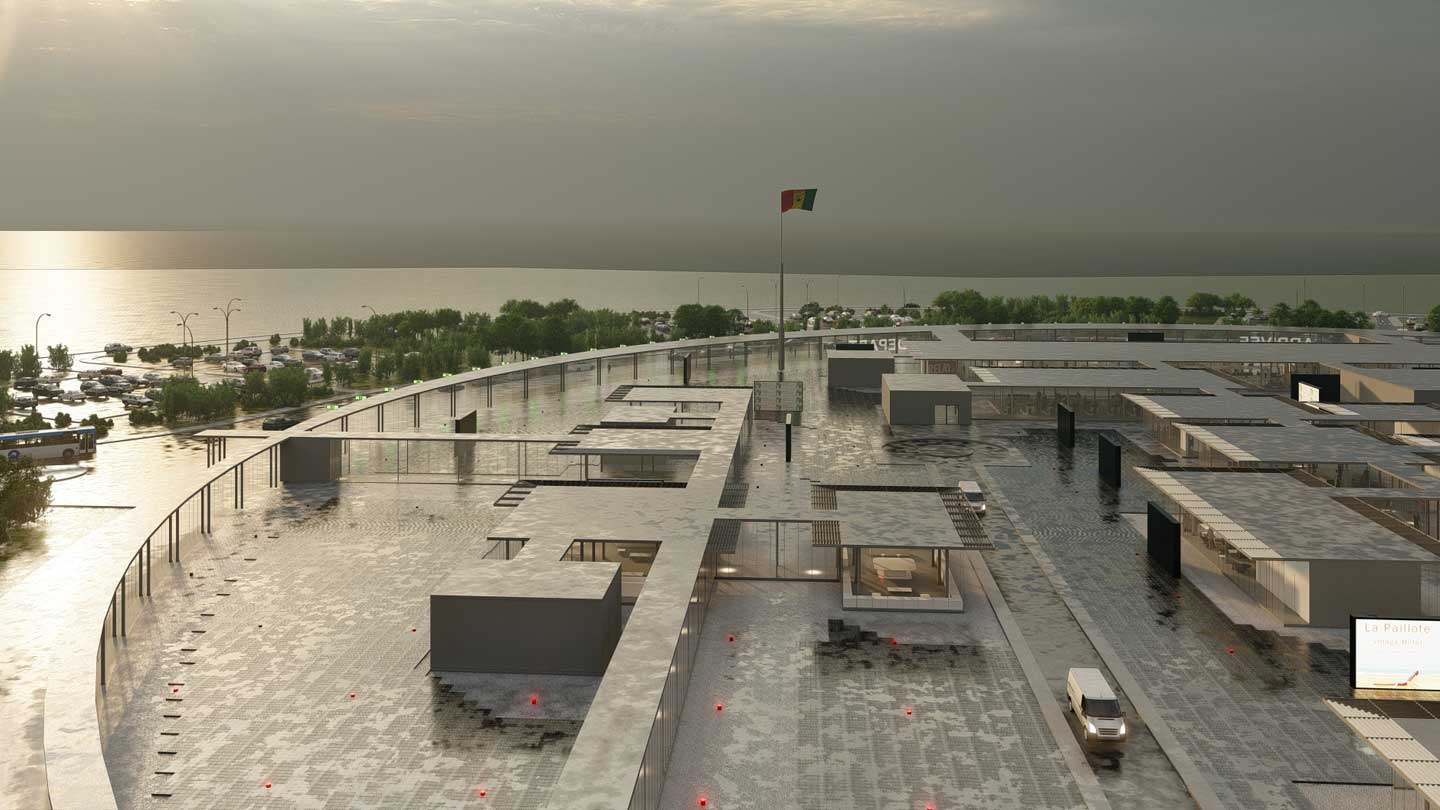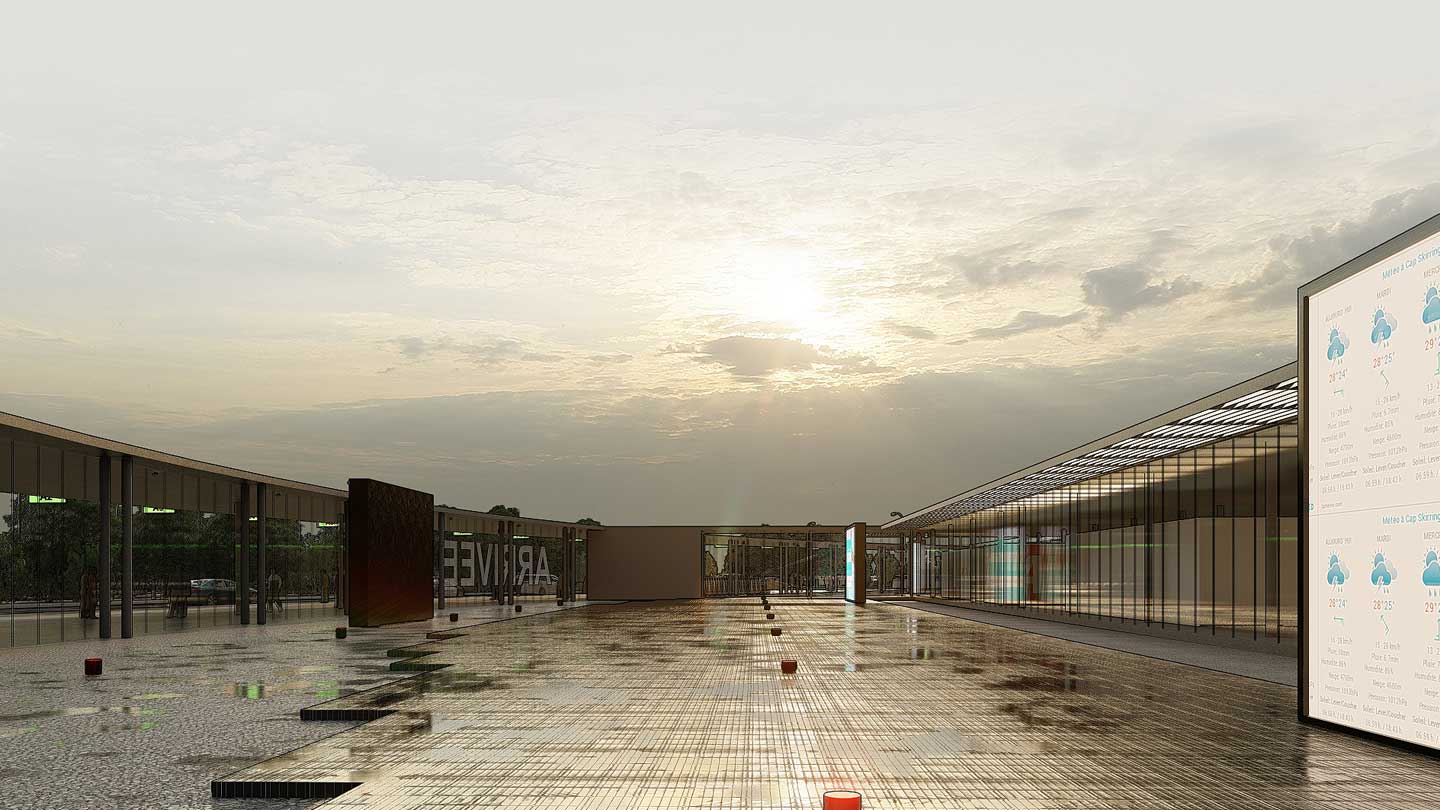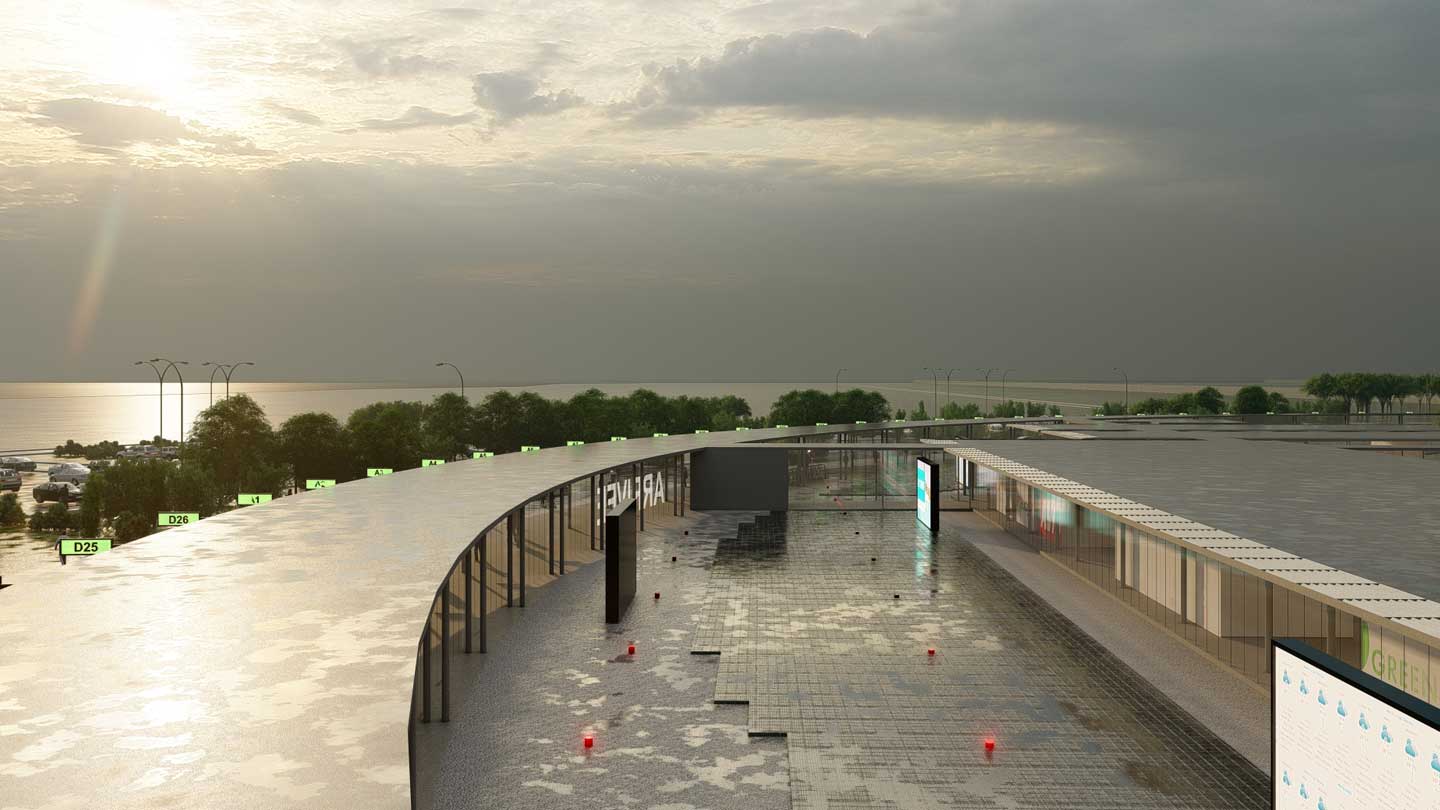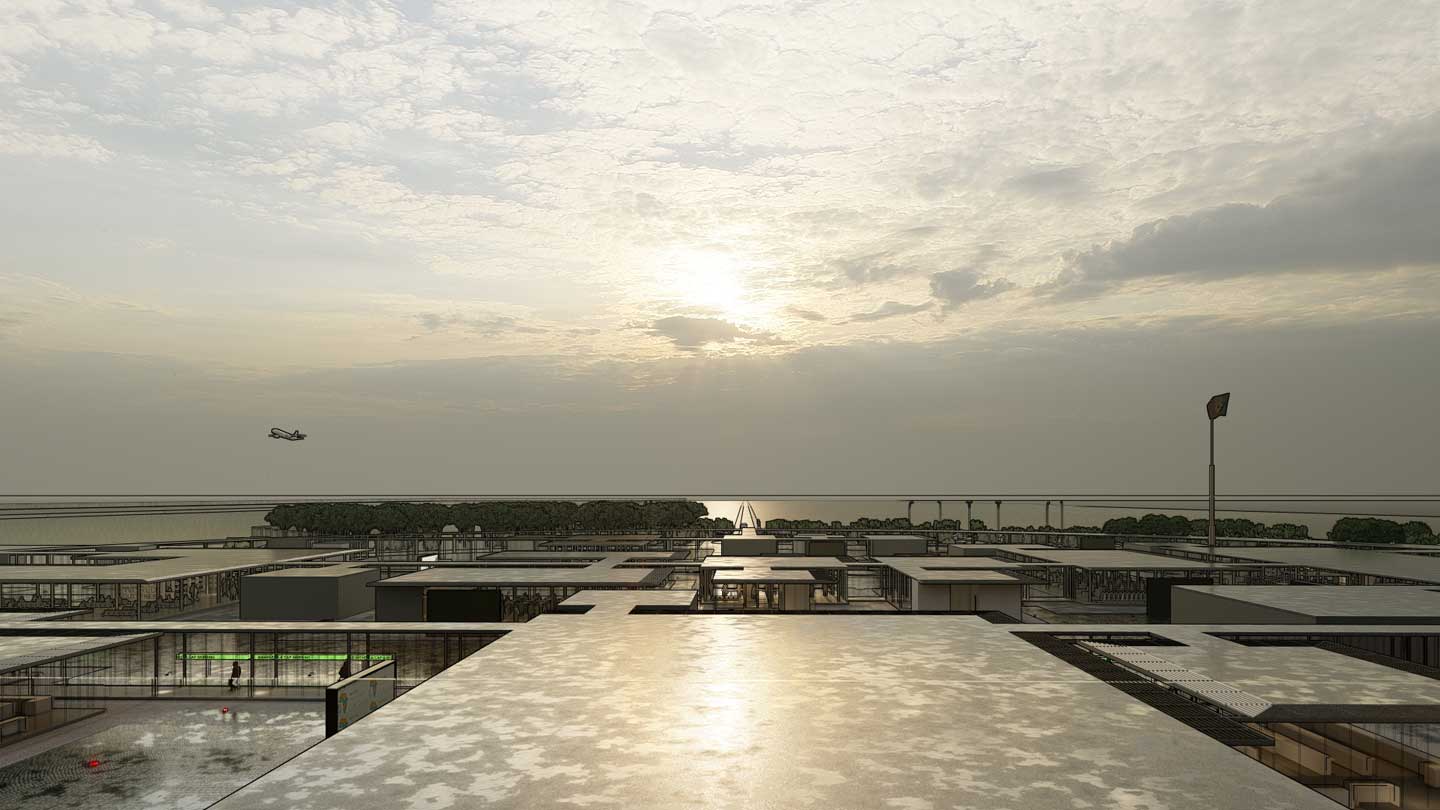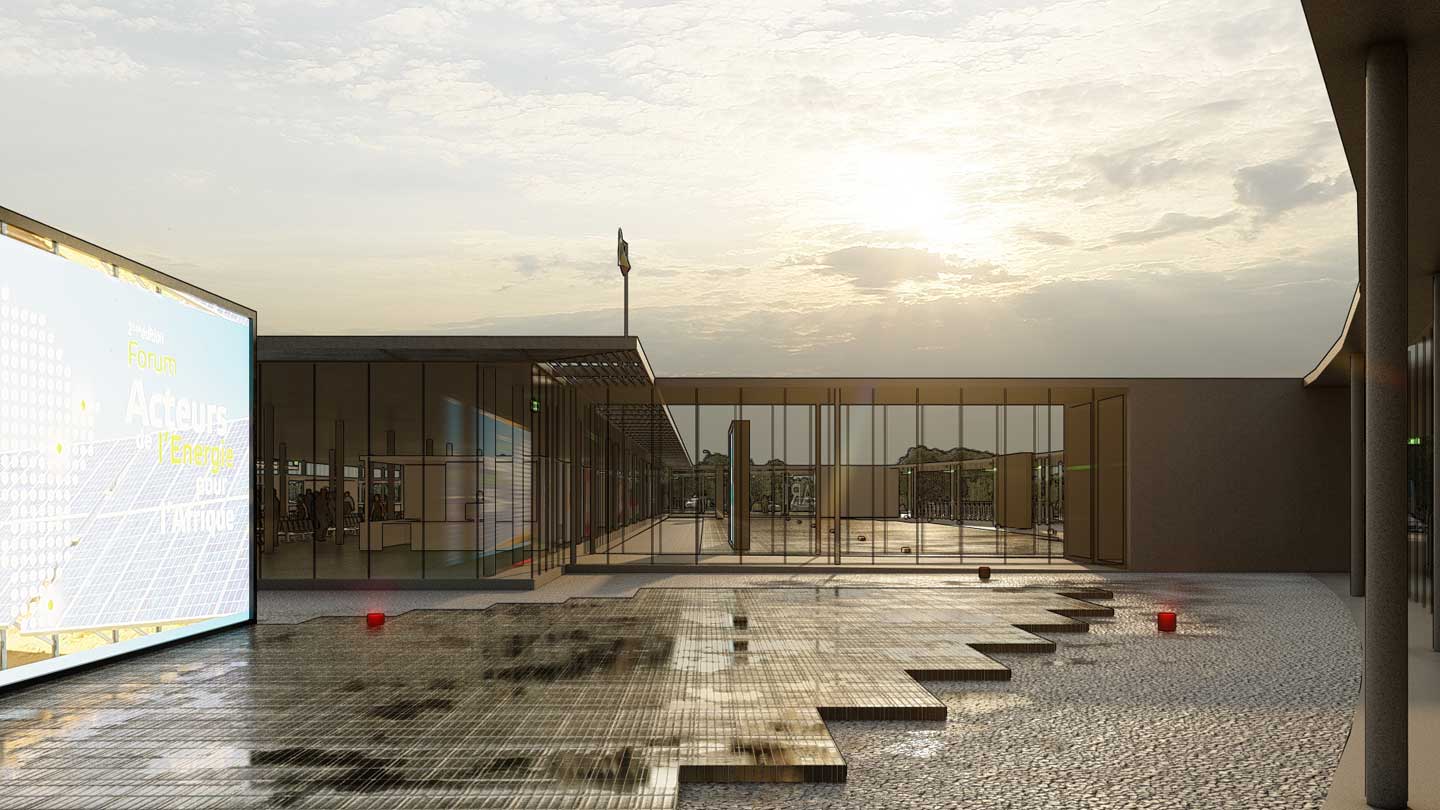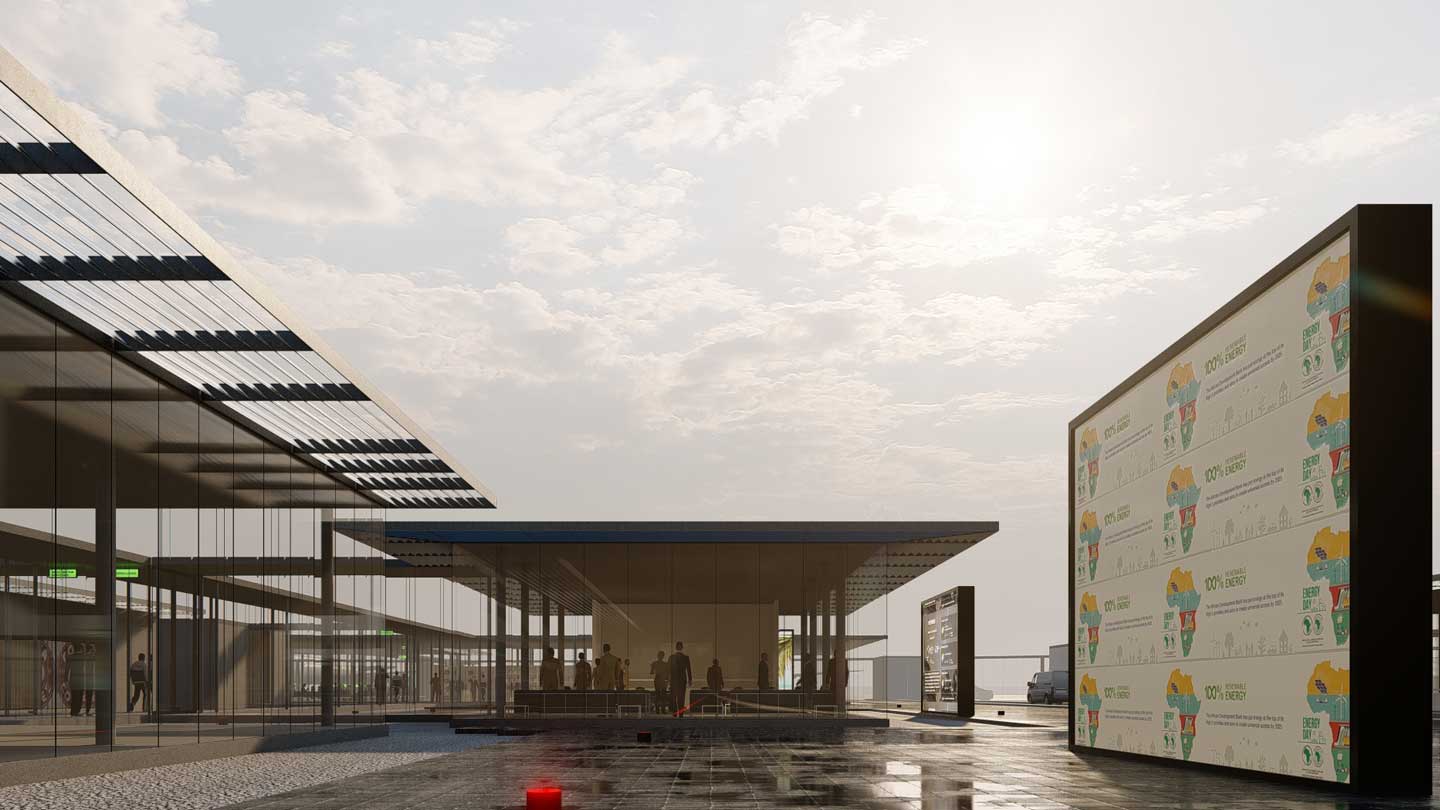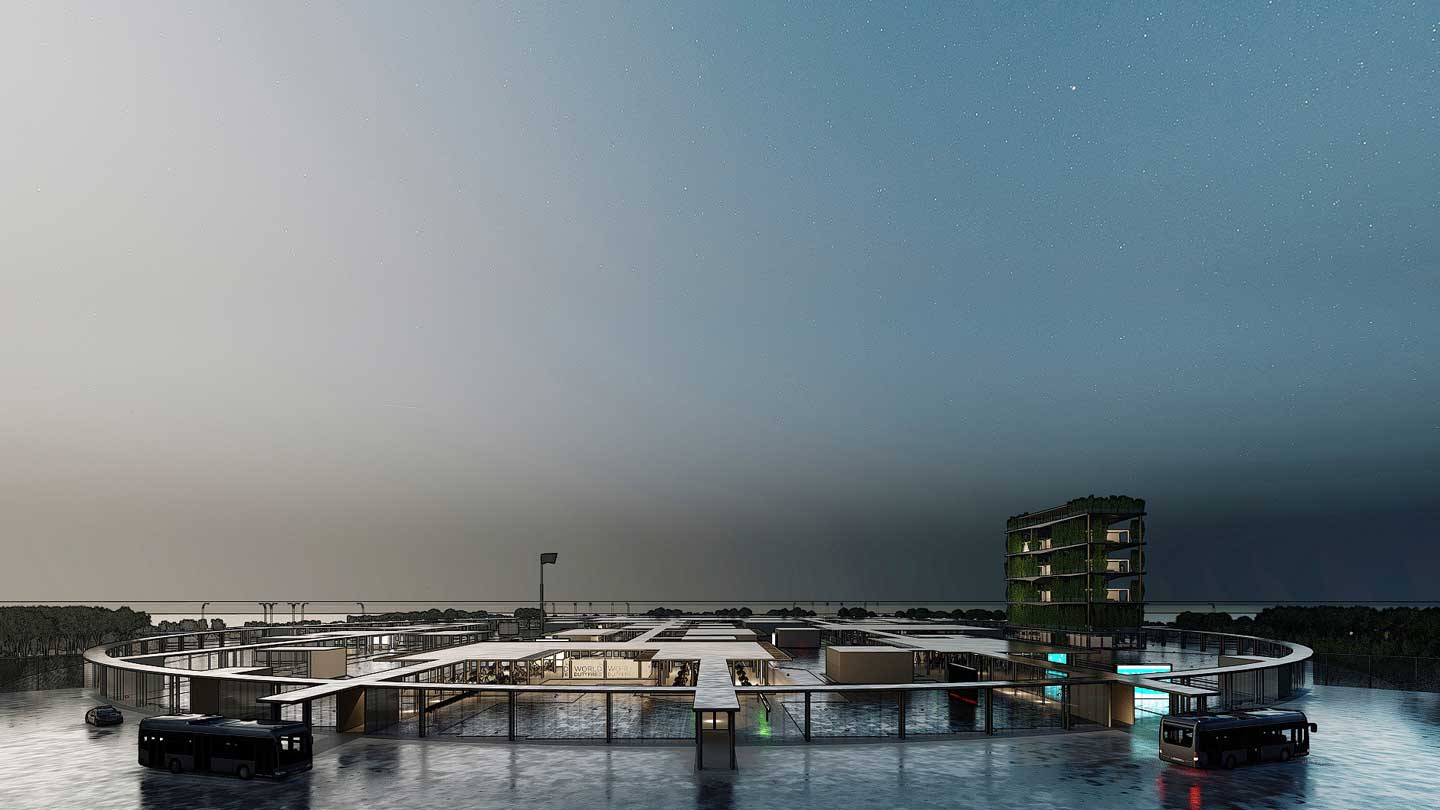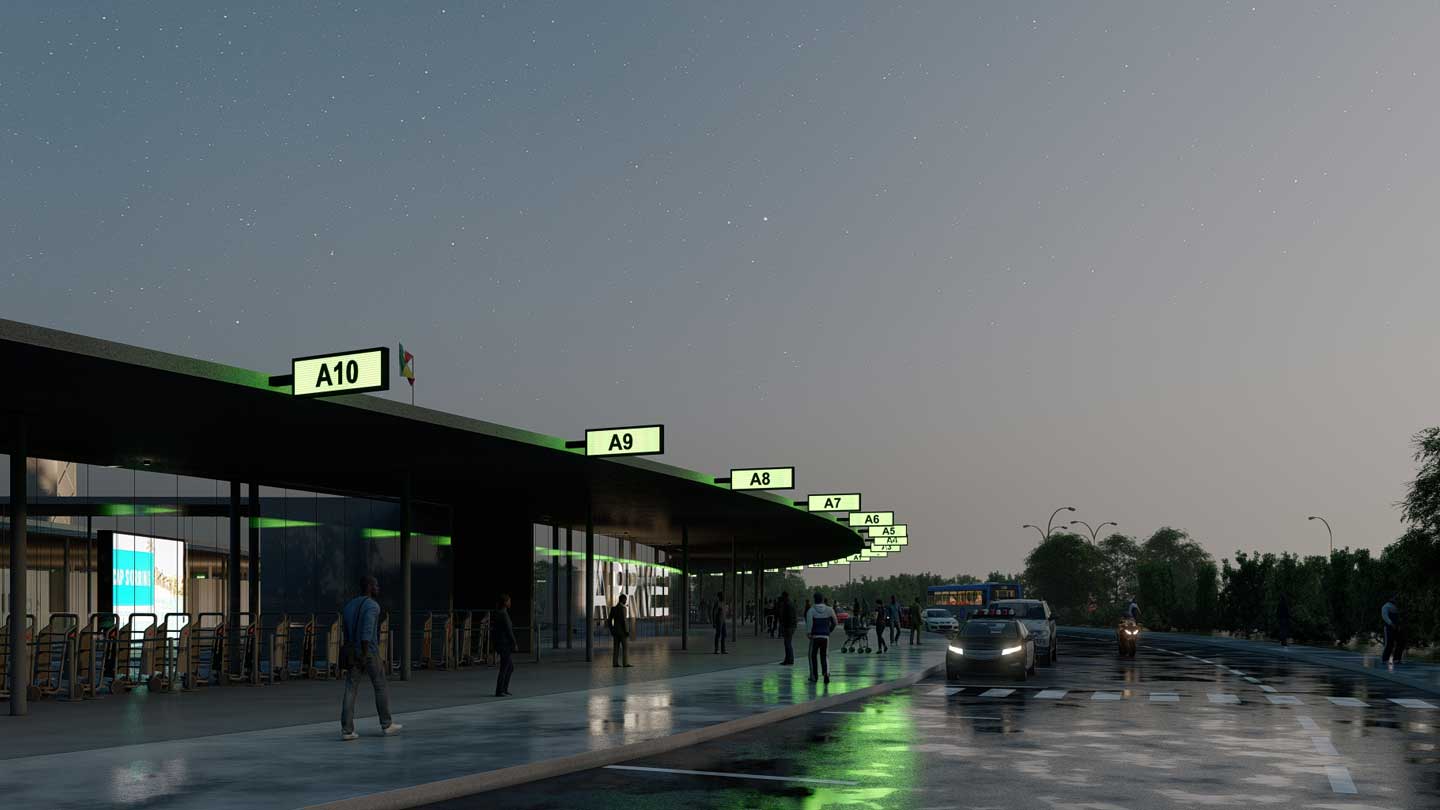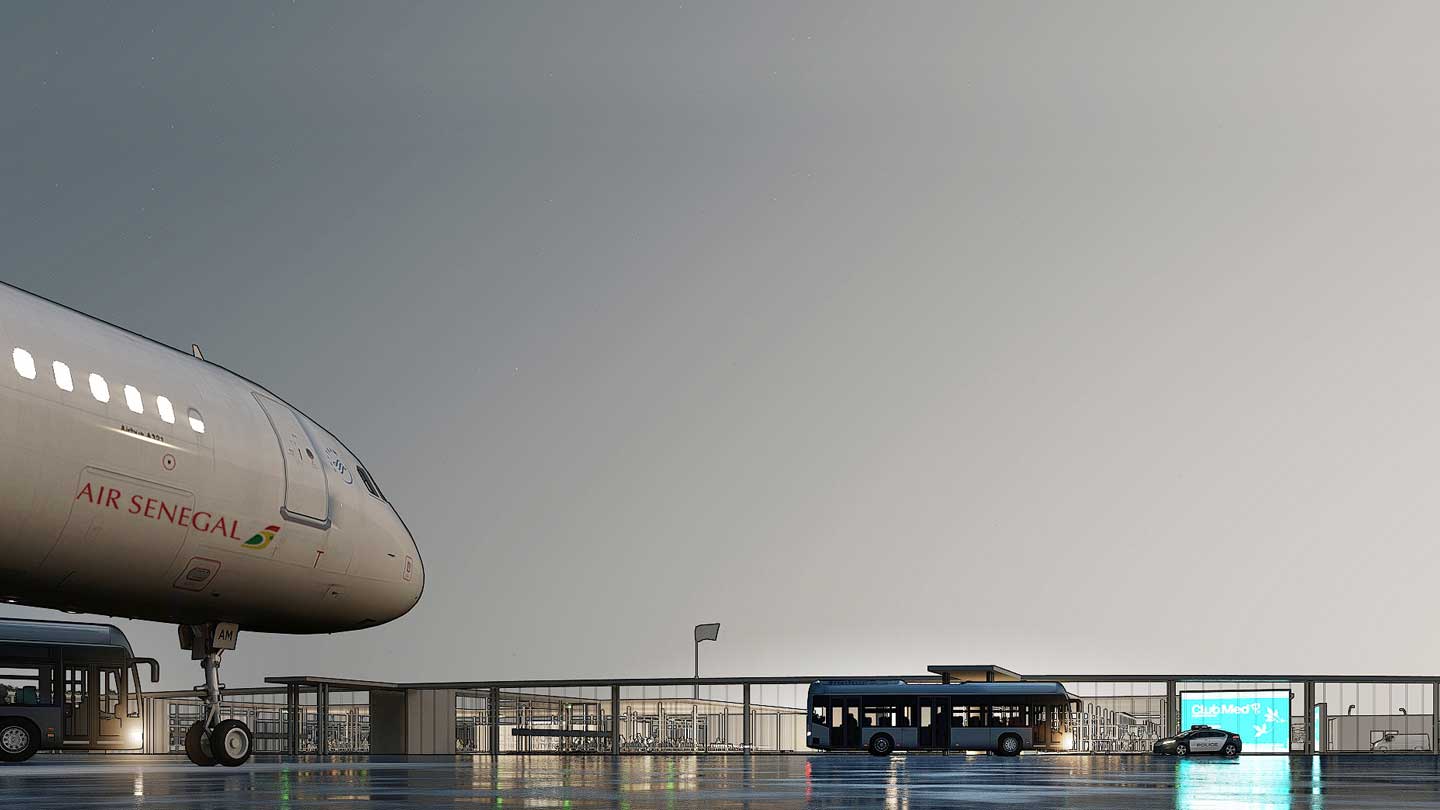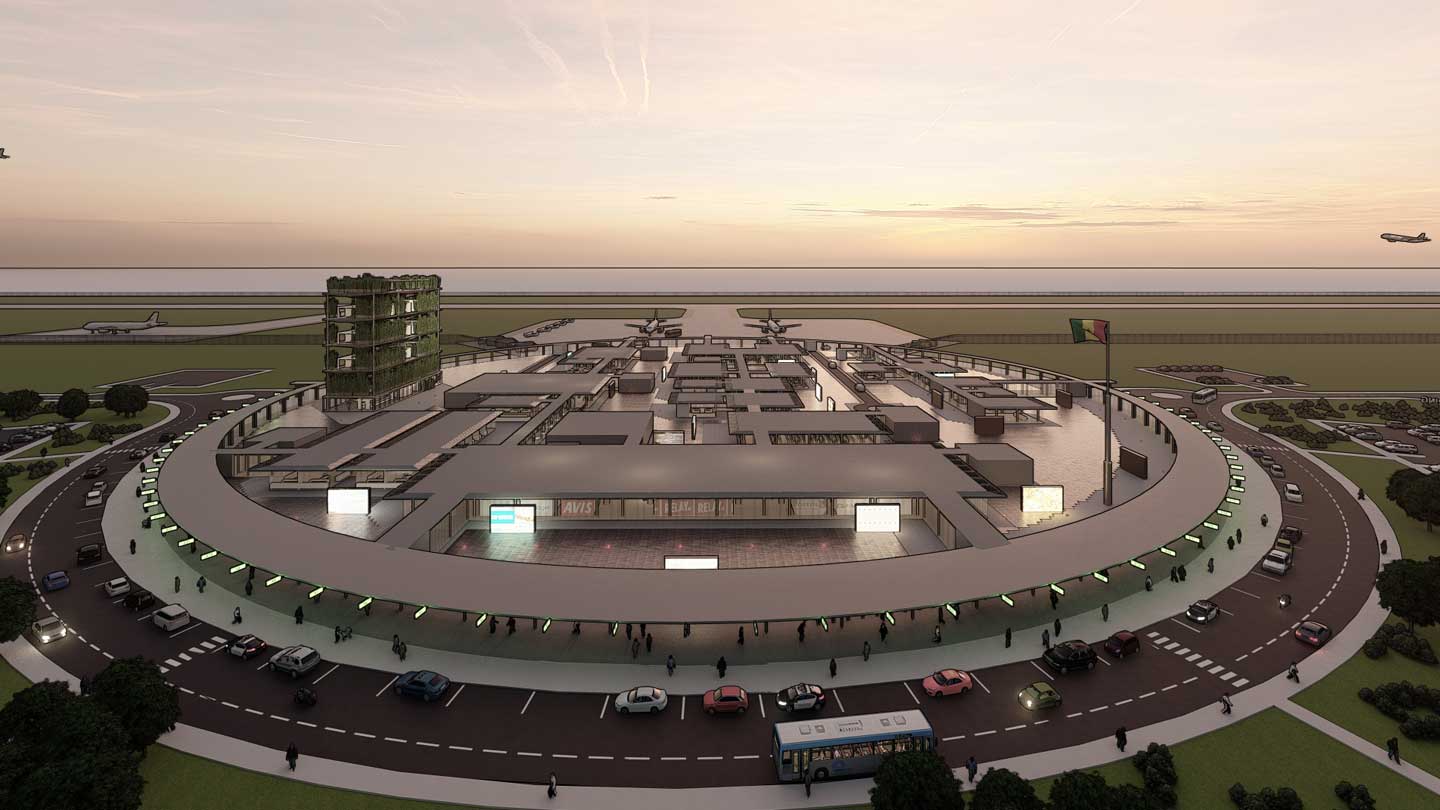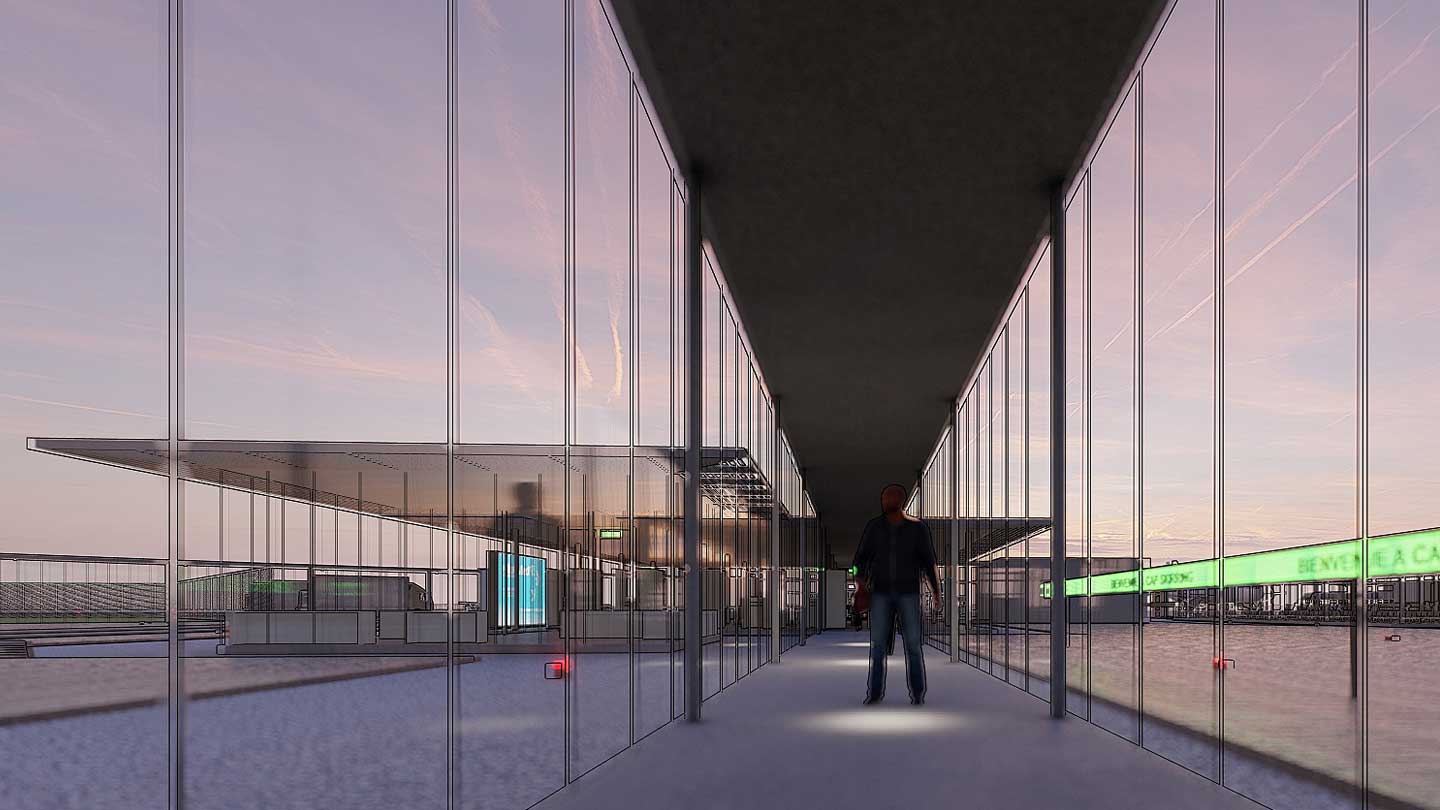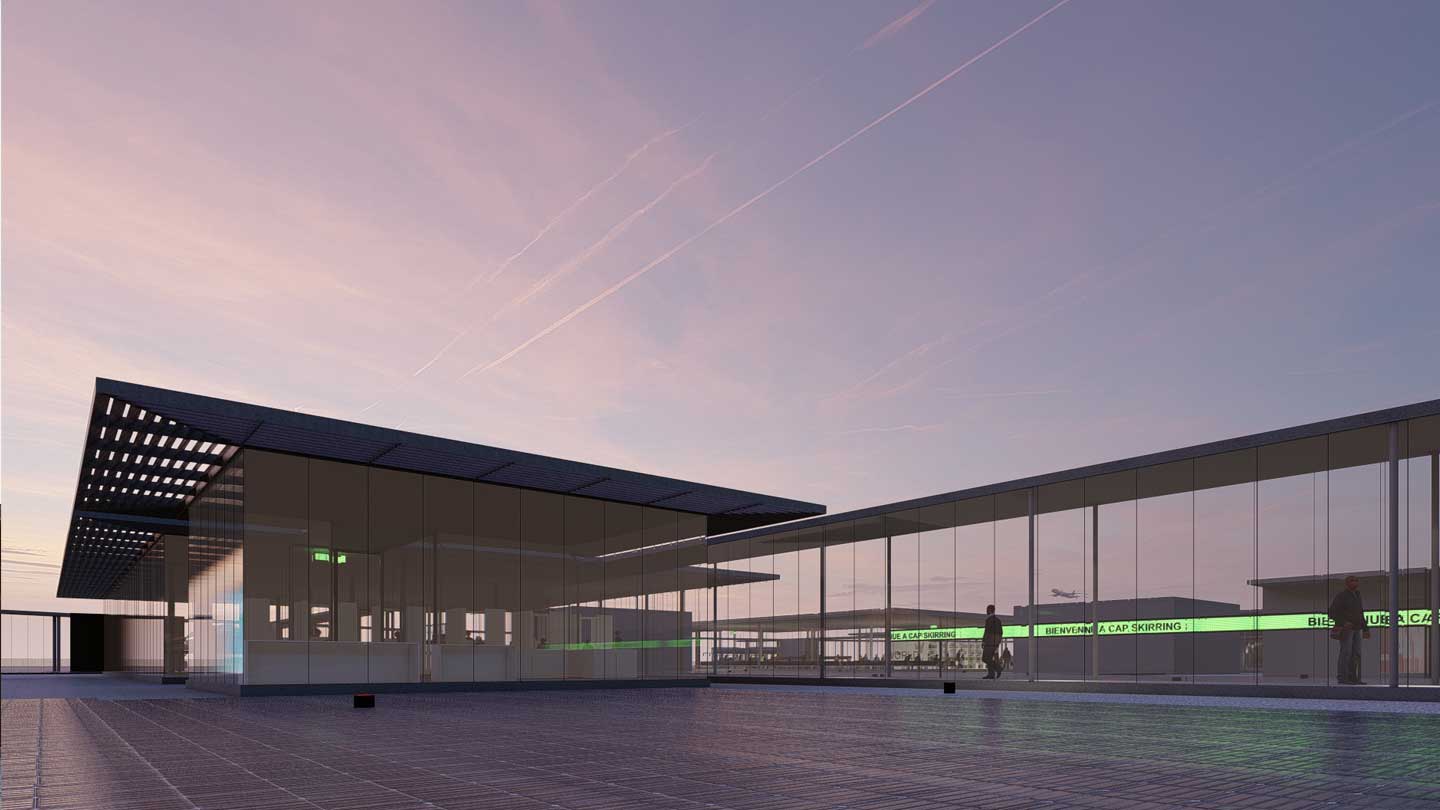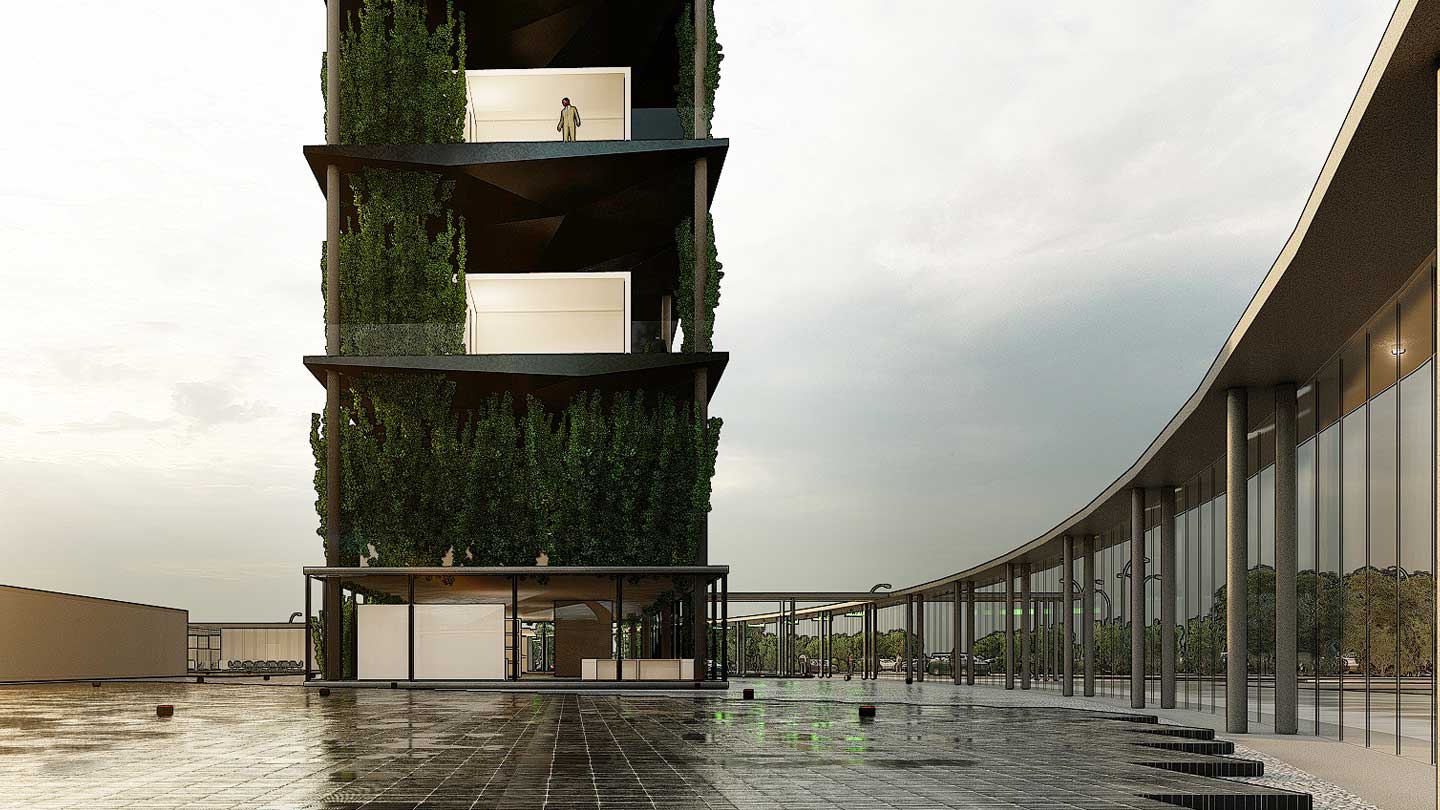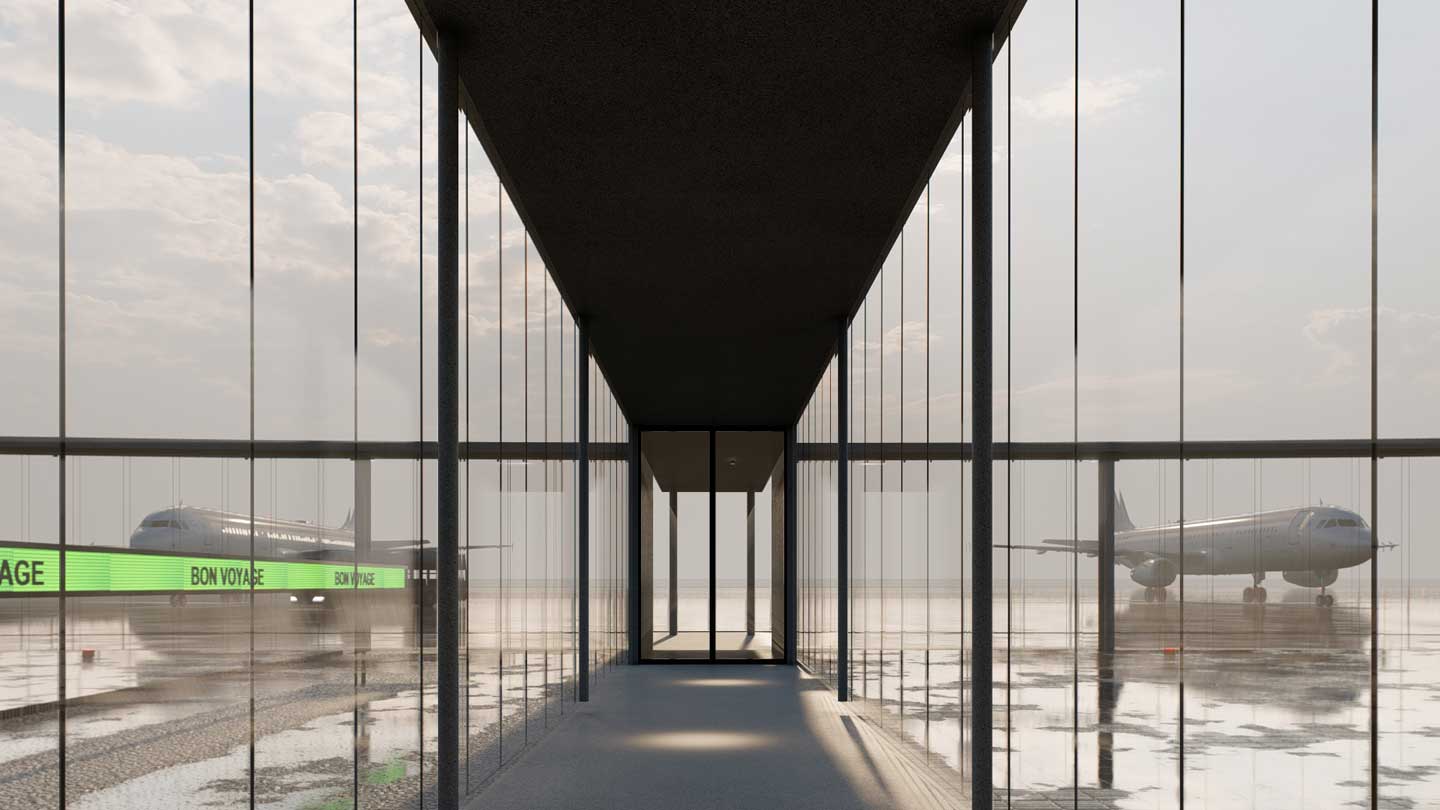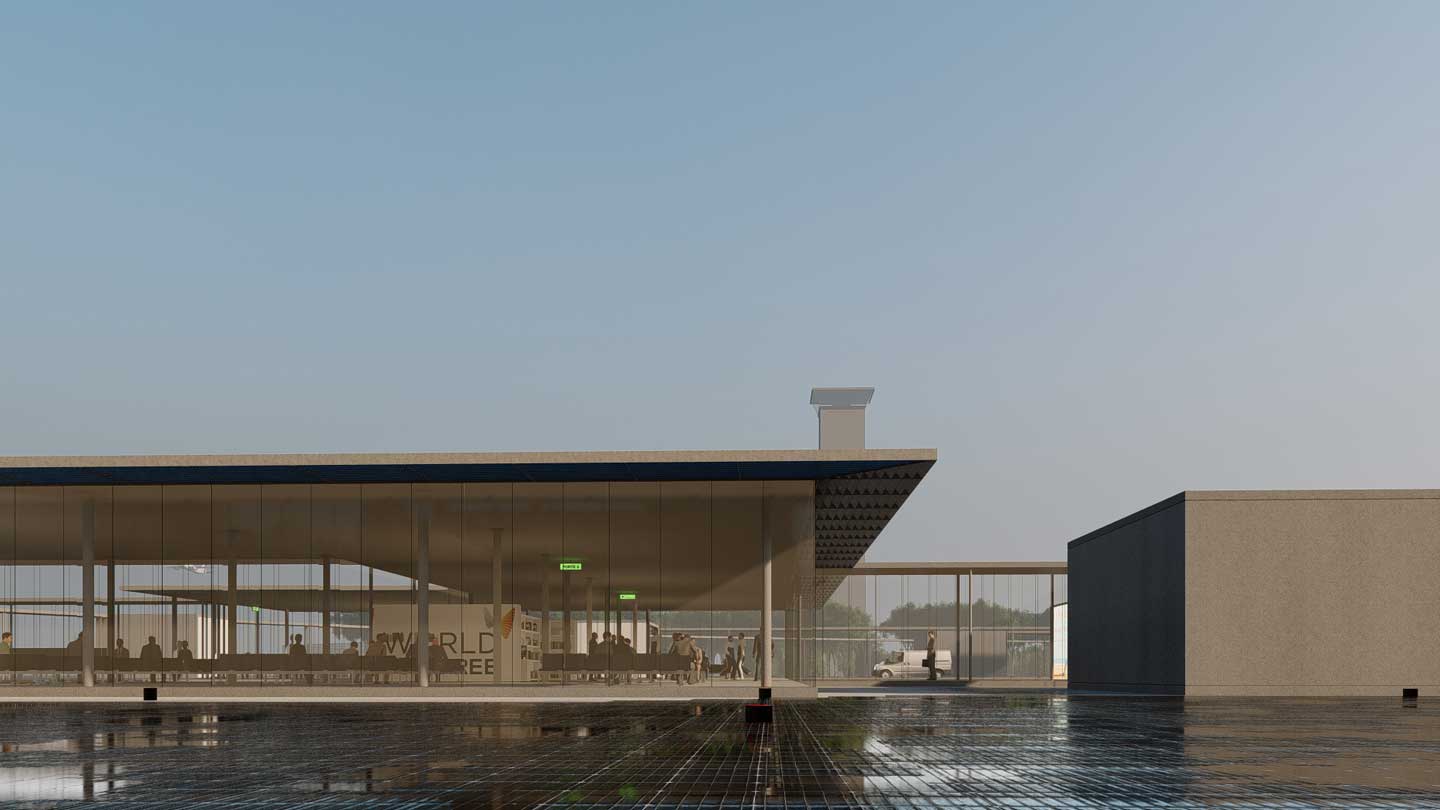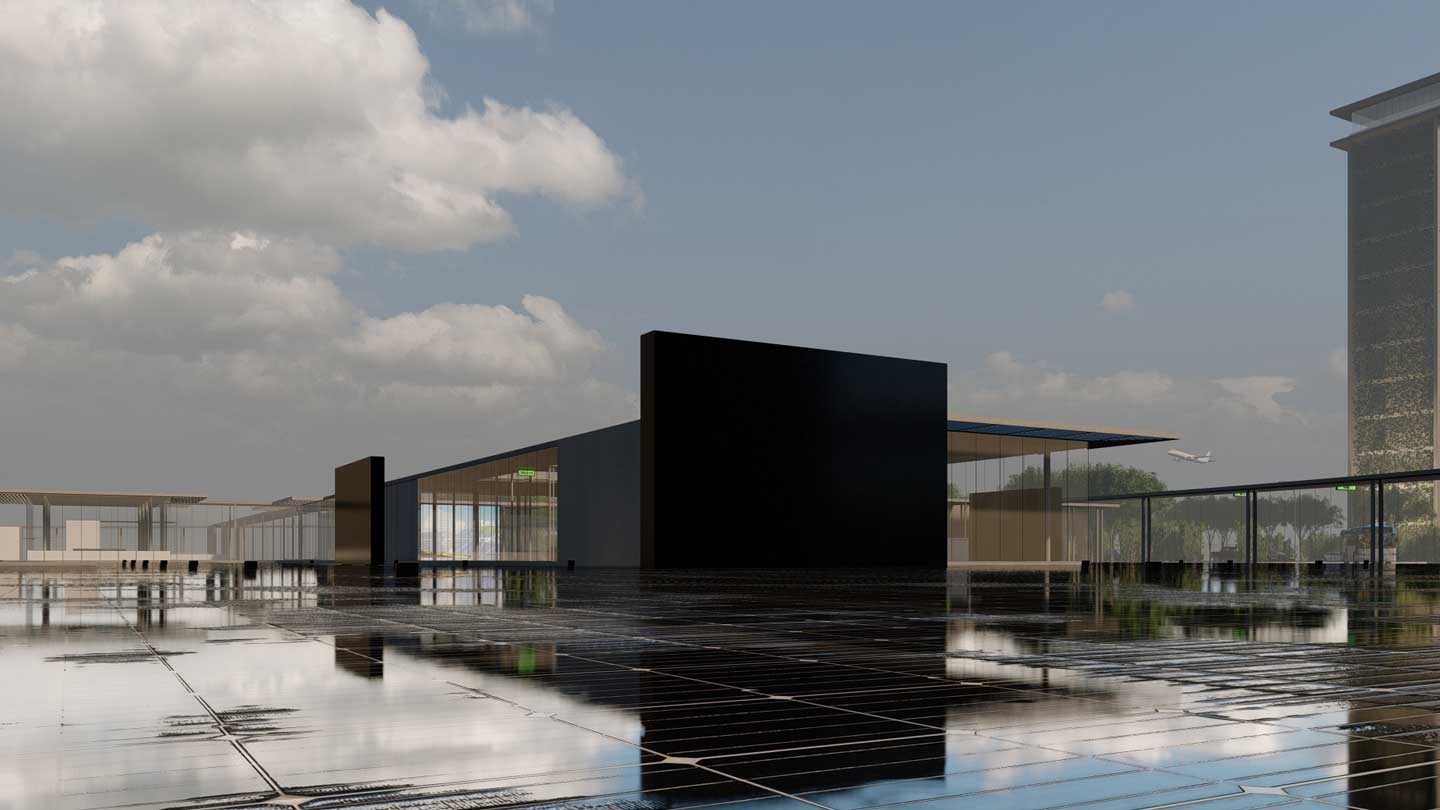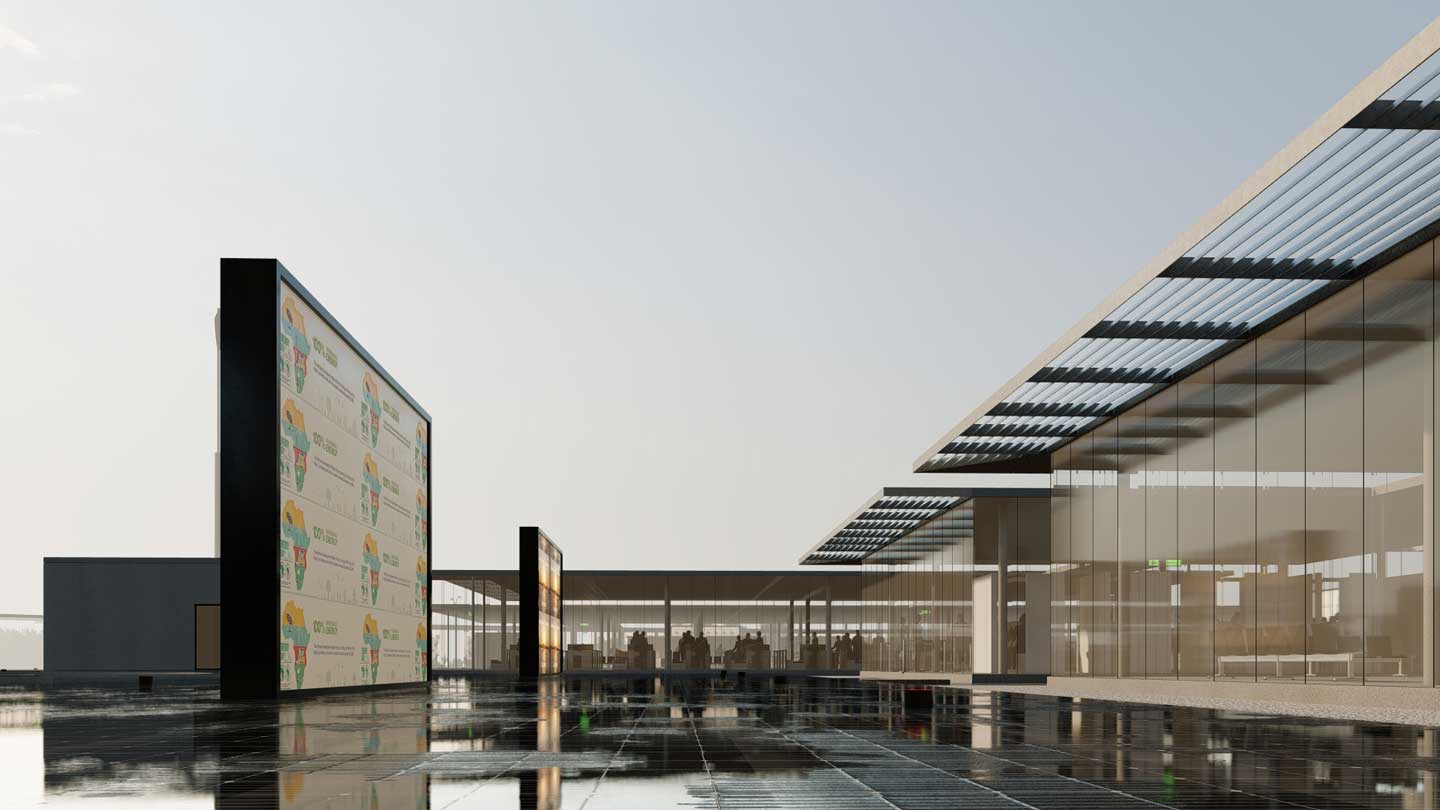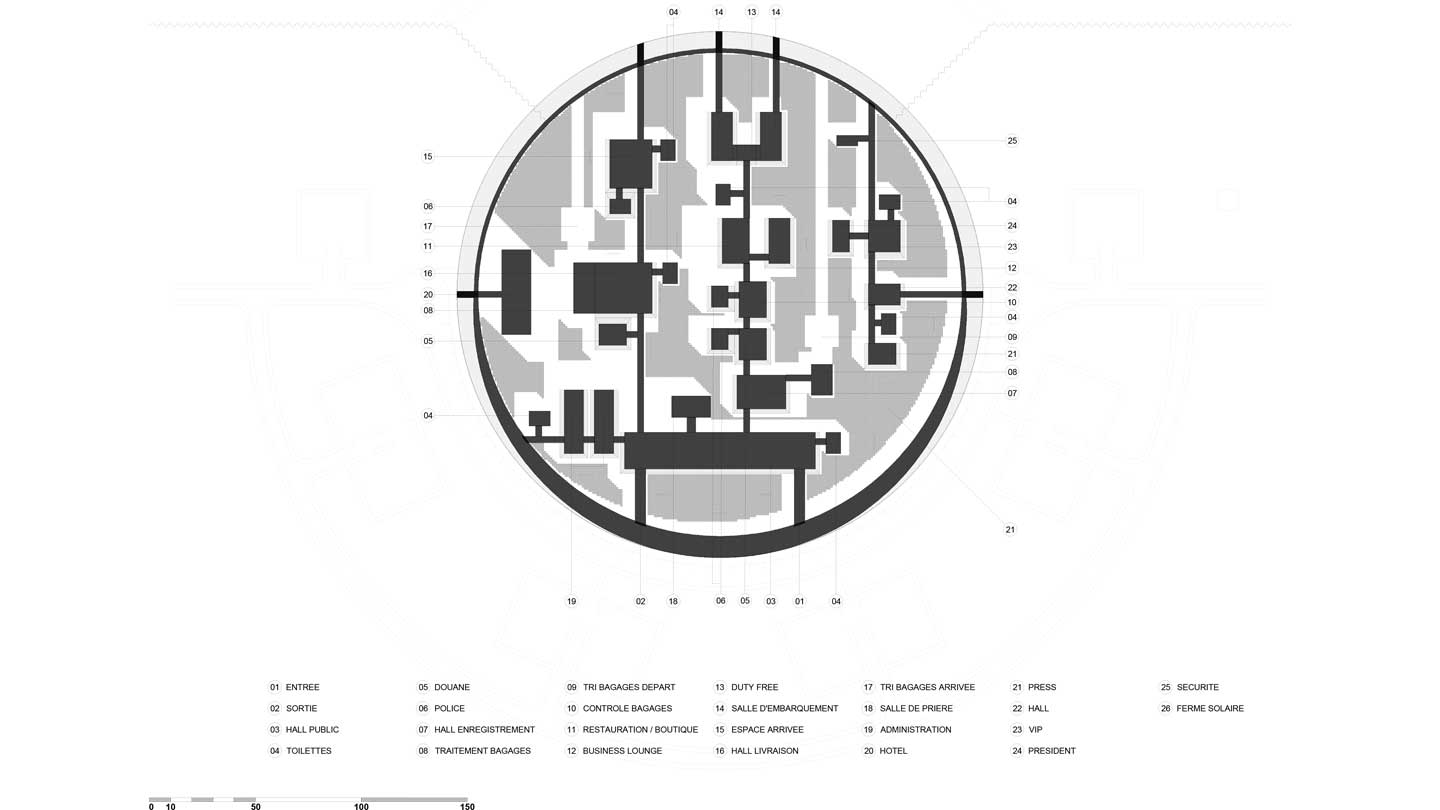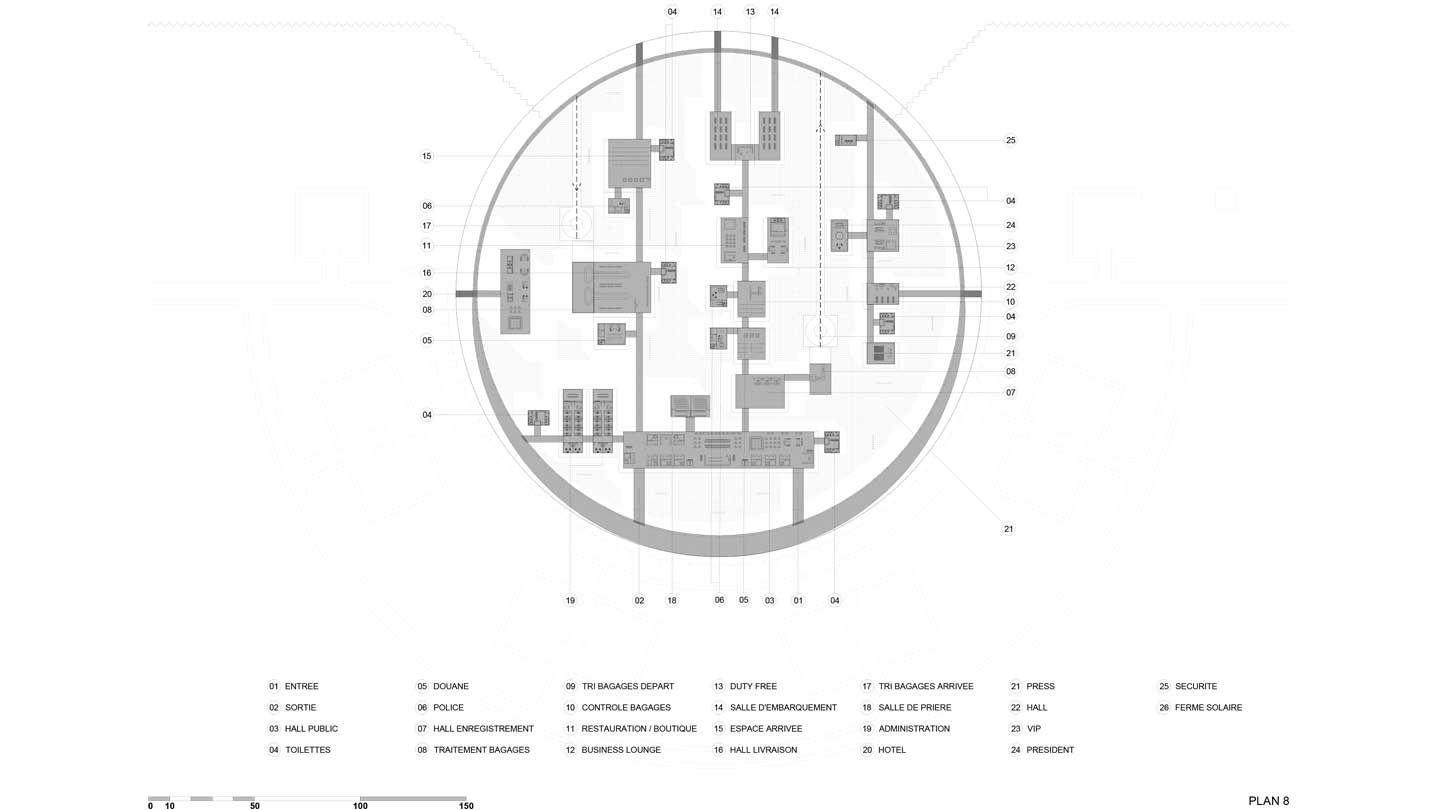
Senegal's future airports will be precursors of a radiant modernity.
They will also be the showcases of the territories they serve.
Their contribution to their environment should not be limited to their sole function as airports. To do this, we propose to graft onto each terminal the necessary tools and structures that will stimulate the development of sectors specific to each destination. Thus, these buildings will be multifunctional, they will be built on programs whose synergy of the various functions proposed will have to be beneficial to the territories served, both socially and economically.
These airports of the future will be exemplary in terms of energy.
They will produce their own solar energy and will also provide energy to the surrounding communities. To achieve this, we propose an innovative architectural design that celebrates the design and landscape potential of the solar farm.
Our project also aims to be in step with our times and its technological advances.
Thus, the contemporary airport should no longer be materialized by an imposing mass.
From now on, the design of "intelligent" buildings should adopt strategies that favor the economy of mass and matter.
The energy consumption of these future airports should be minimal.
In order to provide ideal conditions for all functions that allow for optimal natural ventilation, we propose to spread the program components across the site. In contrast to conventional architectural approaches that group and concentrate all building functions behind a single massive envelope, we propose an assemblage of pavilion structures that offer potential transparency and permeability in all orientations. This allows for the control, channeling and circulation of prevailing winds as well as optimal natural lighting throughout the pavilions. The spatial qualities of this party also allow for the planning of shallower slabs that are more connected to the elements and the surrounding landscape.
This architectural party also allows us to arrange optimal pathways and connections through the different sequences of the program. These paths will offer "tableaus" made of breakthroughs, superimpositions, vis à vis, transparency but also of successions of screens arranged in the open air, projecting images and digital animations with informational and cultural content.
The structure that we propose is deployed on a single level. This party thus eliminates the need for vertical circulation, the construction of the structures that they imply, the mechanical installations and the energy necessary to the functioning of the conventional airports with multiple levels. The construction of the buildings we propose is also economically competitive. The minimal structural spans proposed by our plan as well as the limited height of the facades are also part of this same logic of economy of means. Finally, the reduction of the volumes to be air-conditioned implies low energy consumption in comparison with the bulky conventional airport halls.





